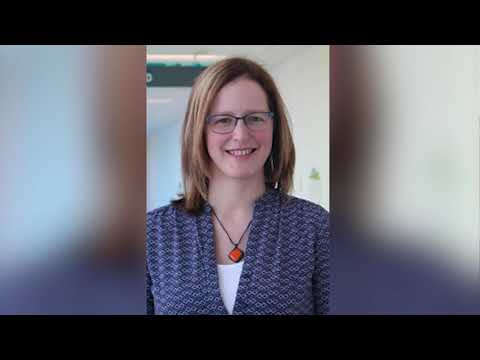Pain Management - Innovation

Pain Management - Innovation
Kaleb, Montreal, Quebec:
Hello, everybody. Welcome to my hospital.
Text layover:
We provide orthopedic care to children aged 0 to 21. Commonly treated conditions include:
- Clubfoot
- Limb deficiencies/discrepancies
- Hip disorders
- Scoliosis (curvature of the spine)
- Osteogenesis imperfecta (brittle bone disease)
Our goal is to help each child become as healthy and independent as possible. To achieve this, we provide a range of services including surgeries, physical, occupational and recreation therapies, and fittings for braces and artificial limbs.
Speaker 2:
Hi, I'm Rosa Alicia Paradelo. I'm a Clinical Nurse Specialist in postoperative care and acute pain management with Dr. [inaudible], who's the Director of Acute Pain Management here at the Shriners Hospitals for Children - Canada. We have created two posters that resume a bit of our projects within 10 years. The first project was a little bit about the diet that we implemented for posterior spinal fusions, which decreased nausea, vomiting, and constipation. The second project was to put medication around the clock and have staff and families teaching to evaluate pain. So that decreased a lot of the pain and especially the needs for opioids. Then we also had the pectus population that undergoes a Nuss procedure, and we have implemented cryoablation with an ERAS (enhanced recovery after surgery) protocol, which reduces the length of stay and pain control, of course, from seven days to 24 hours. And the fourth project is implementing elastomeric pumps for patients having knee surgery. This pump covers three days of surgery, reduces the inflammation process, and it reduces the amount of opioids that they need throughout those three days and even further on.
Speaker 3:
ACLs hurt because they actually drill a big hole through the bone to anchor a new ligament. So it's actually quite painful for the first two to three days. So we're decreasing opioid use. We're also decreasing the amount of opioids available in the community, which is usually leftover opioids are one of the biggest source of opioid misuse that happens in North America.
Speaker 2:
We also provide the families with an informative pamphlet that includes access to a video on how to remove a nerve block catheter. Thank you.
Text layover:
Contributors:
Rosa Alicia Paradelo
Dr. Christelle Poulin Harnois